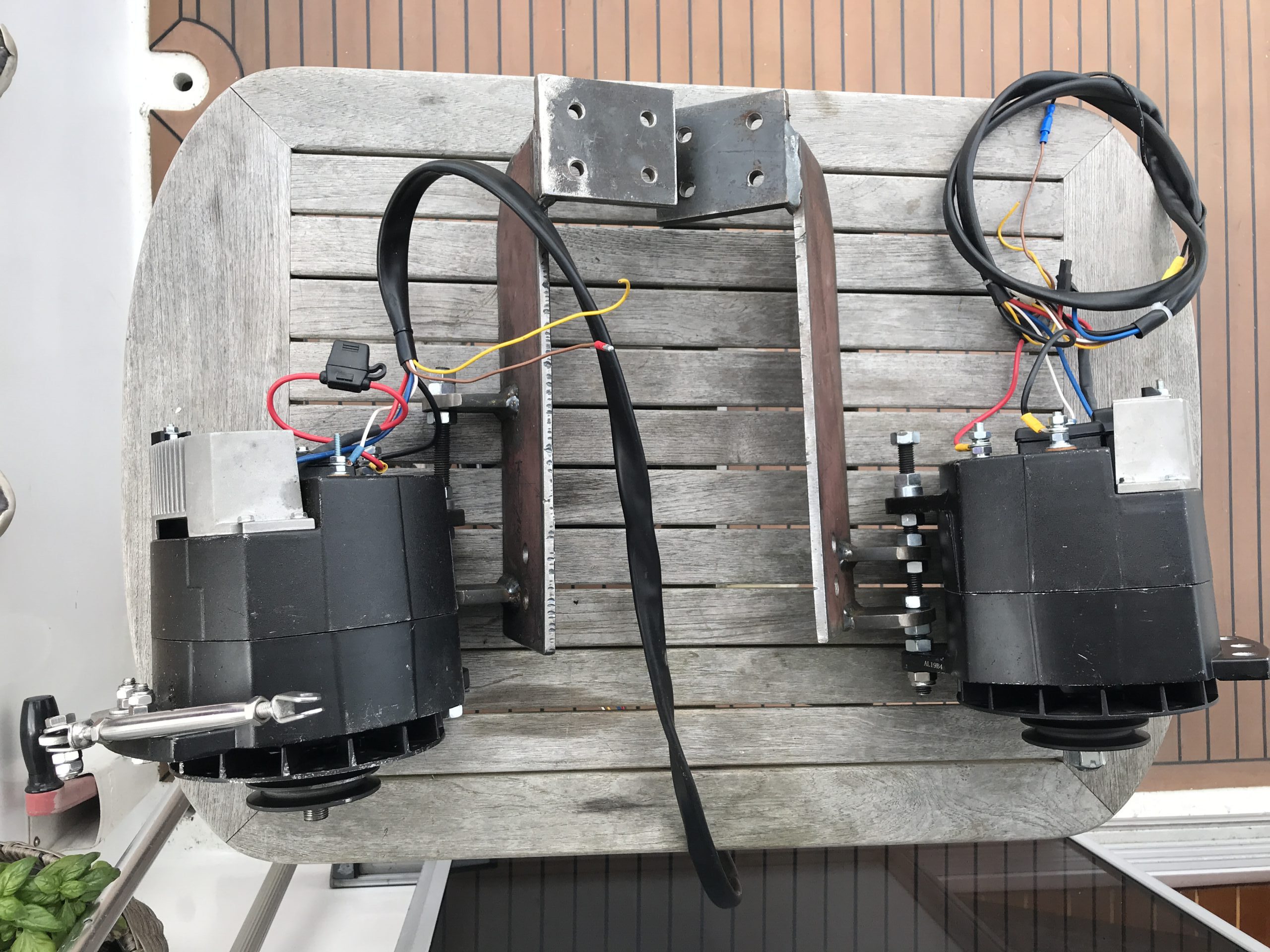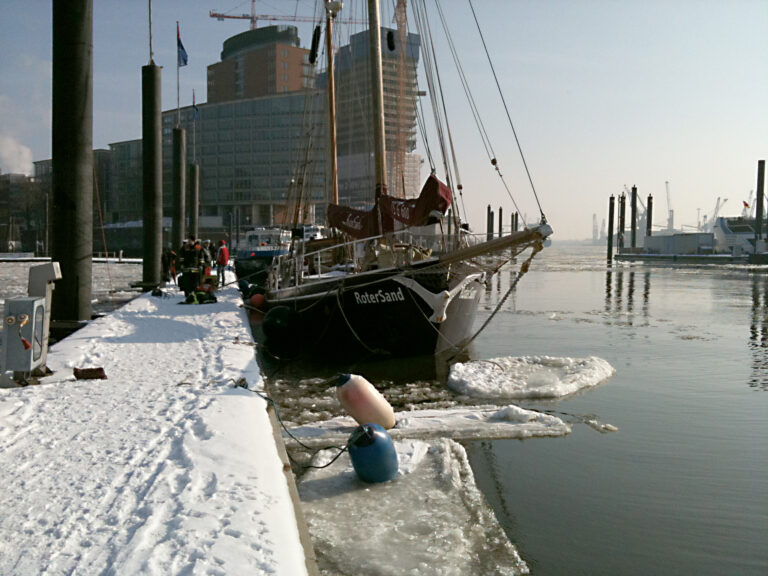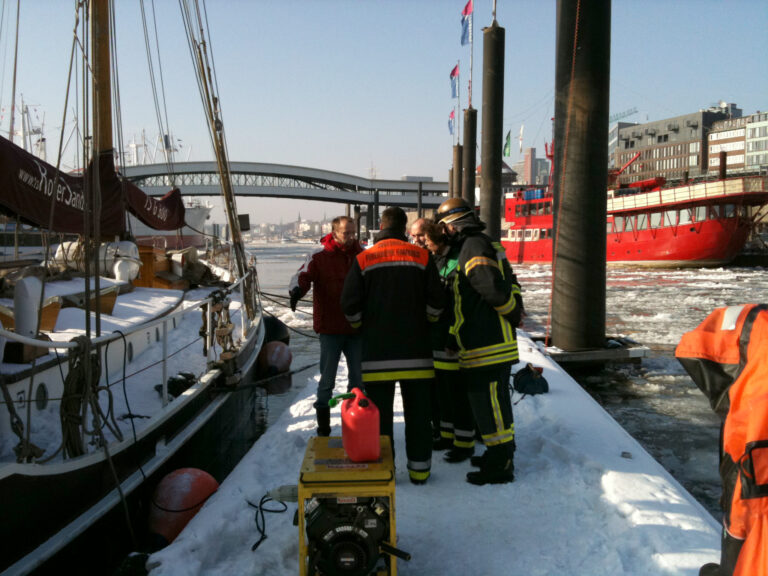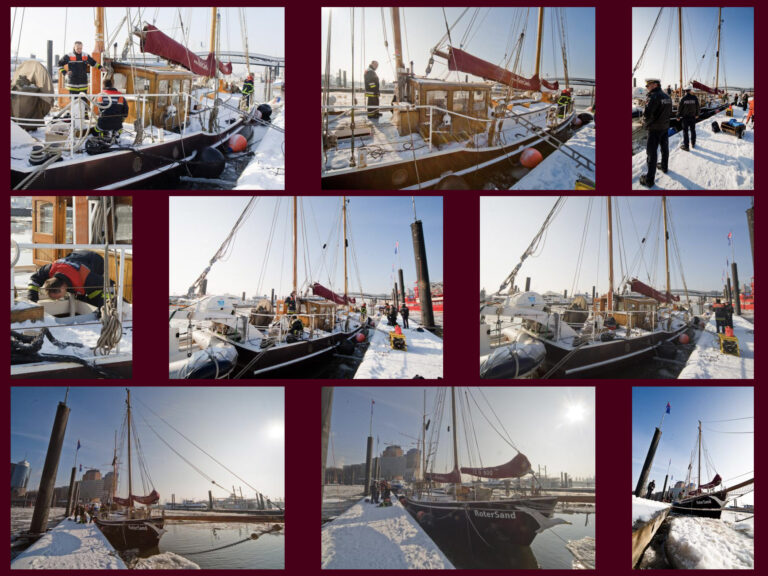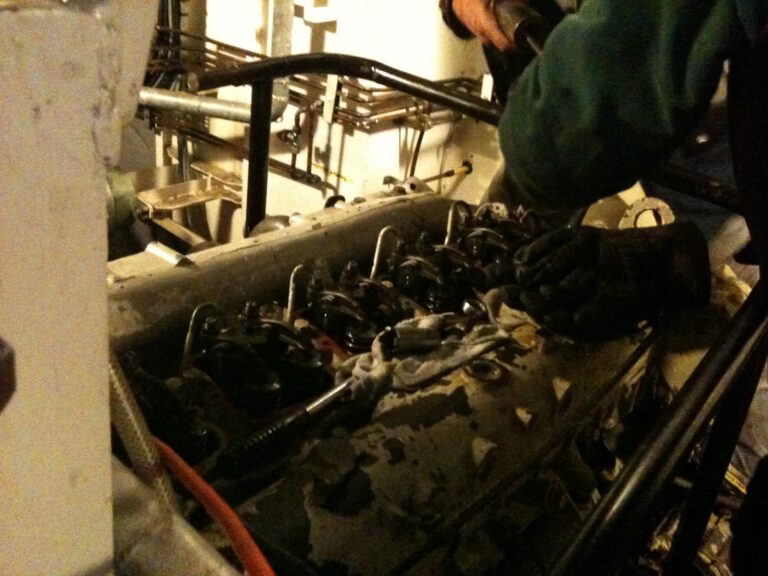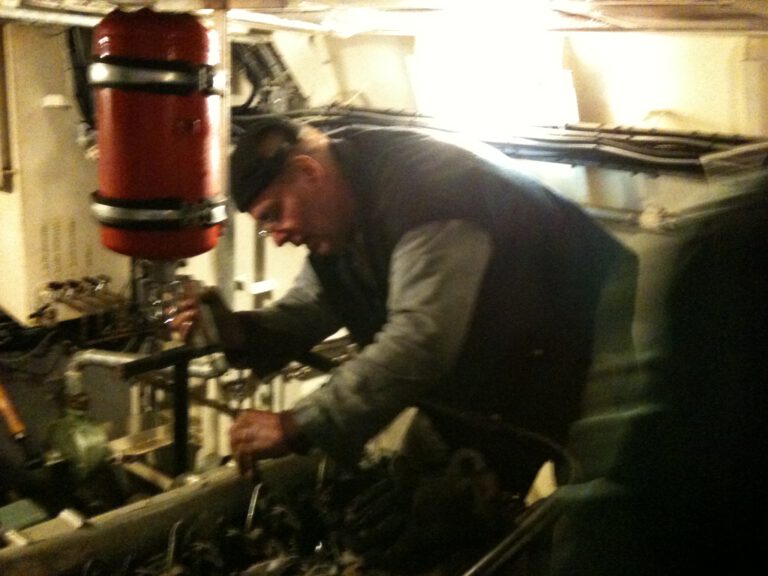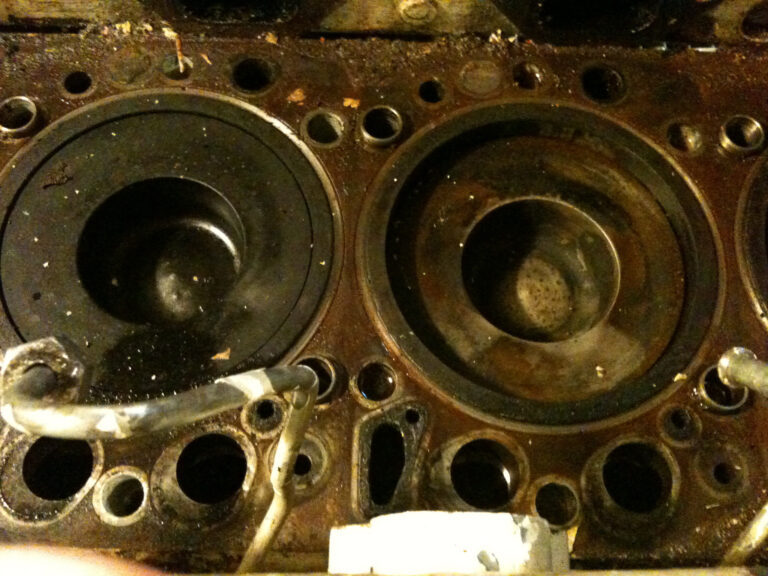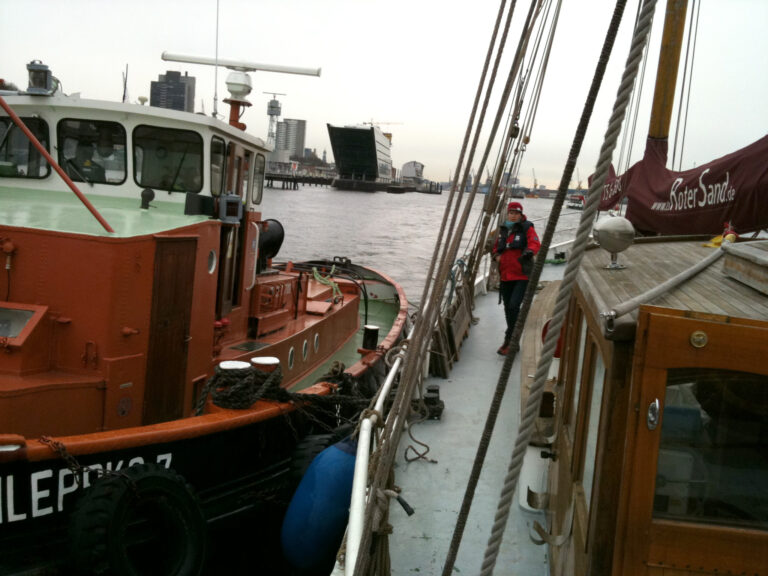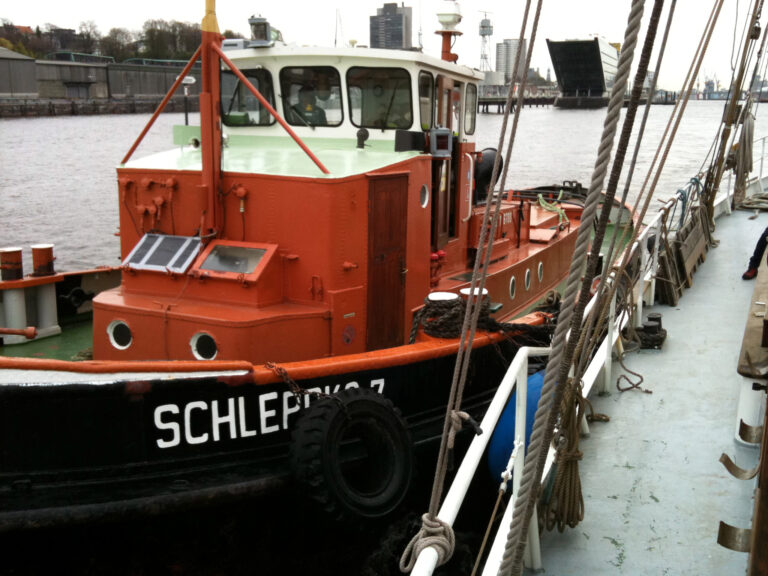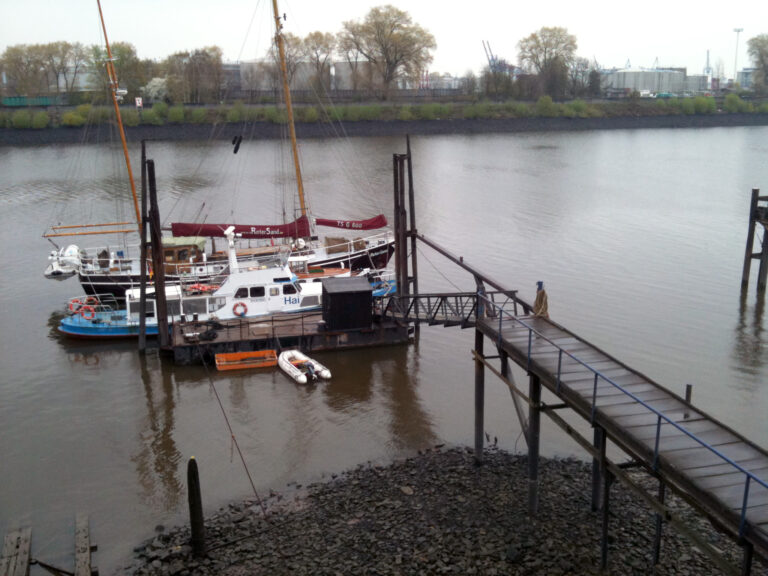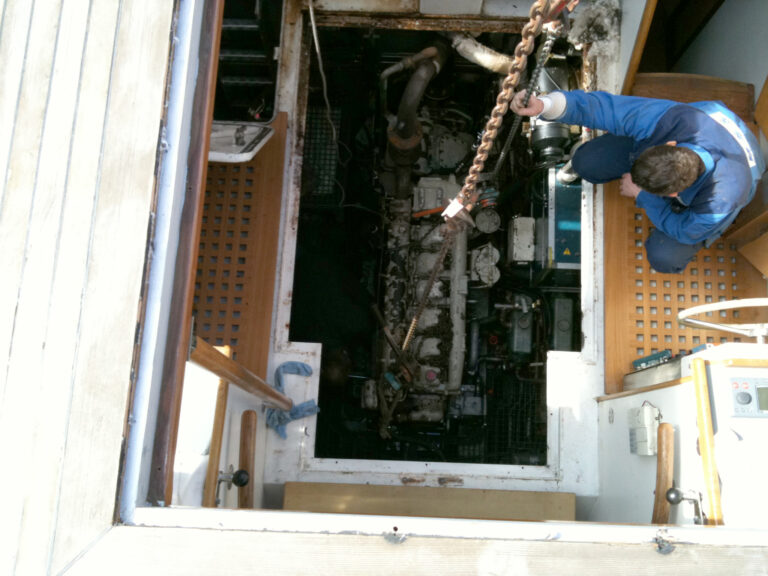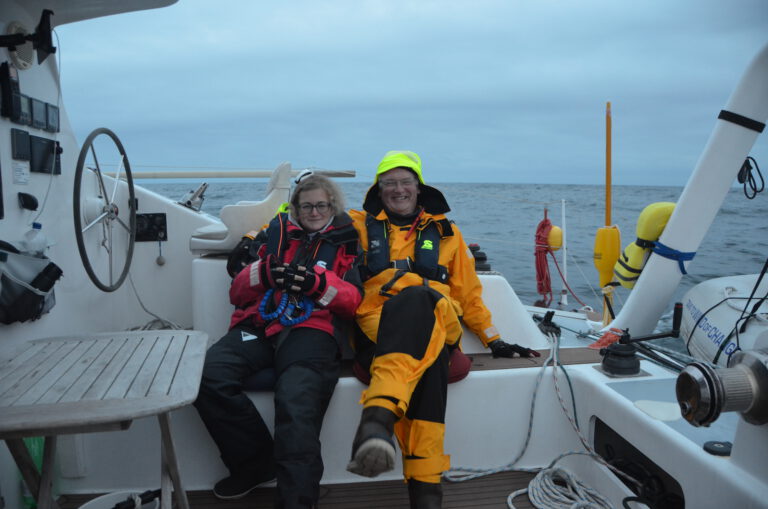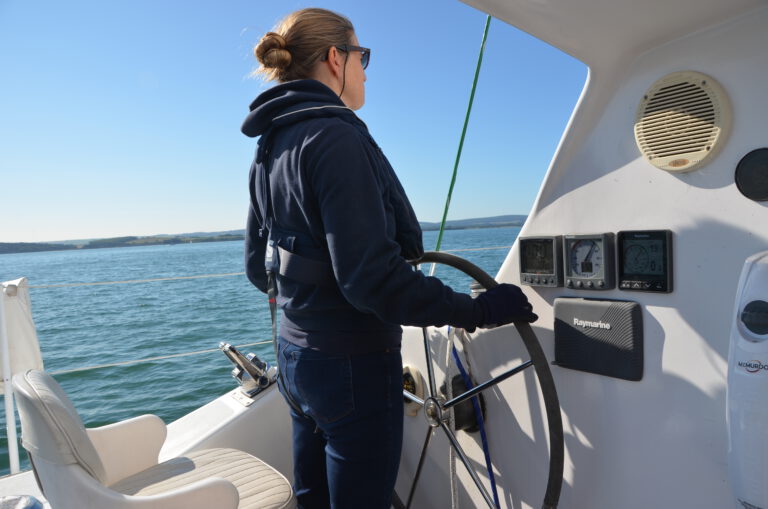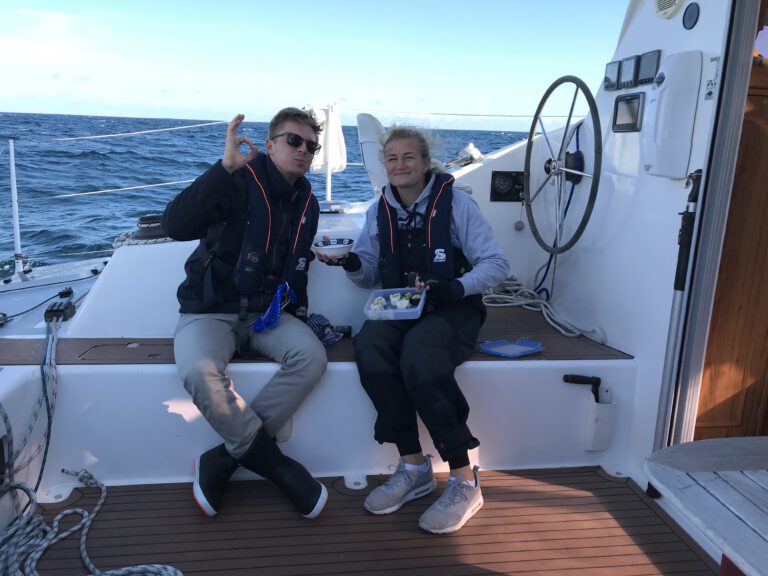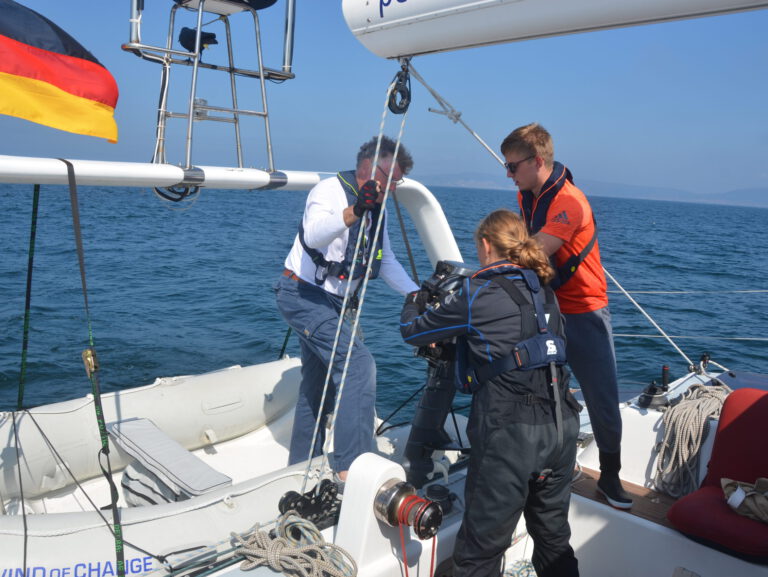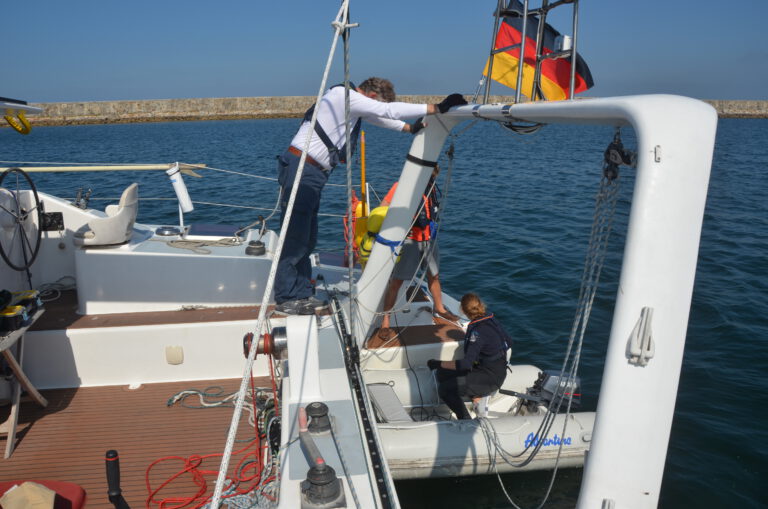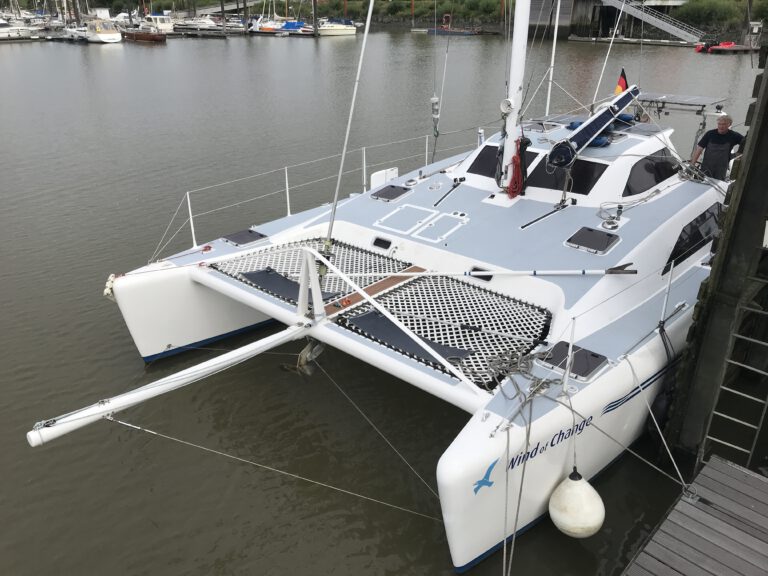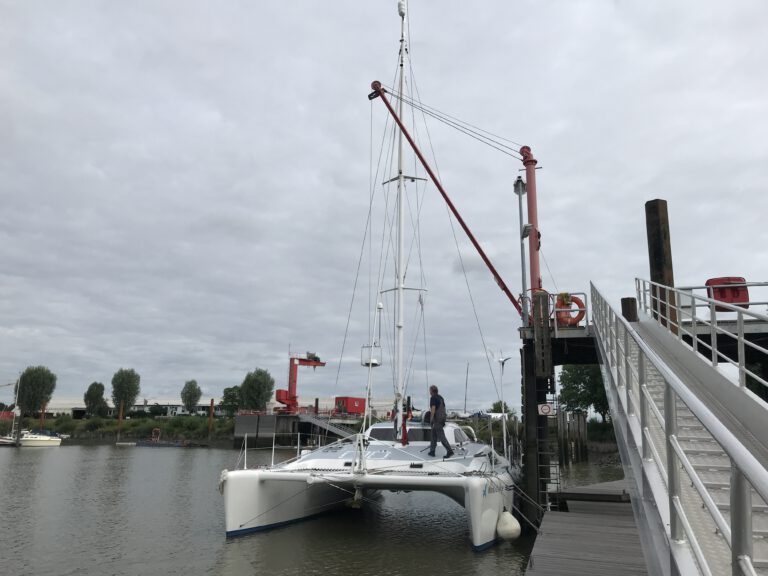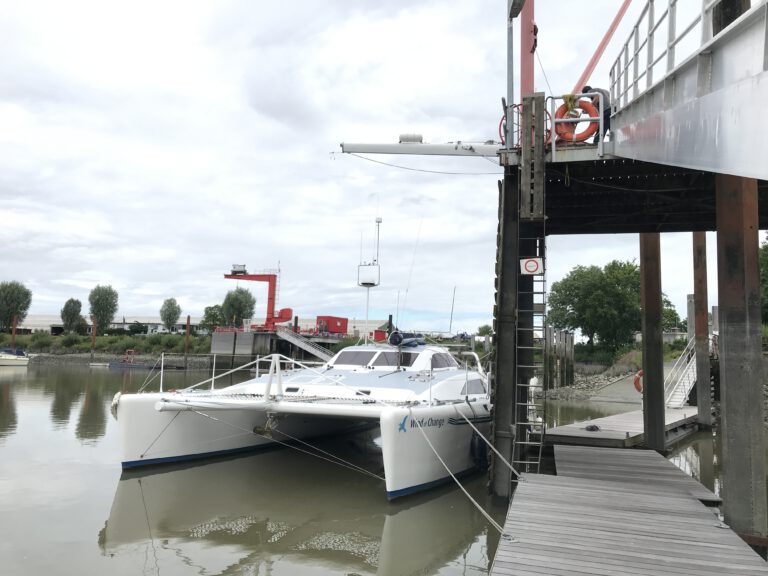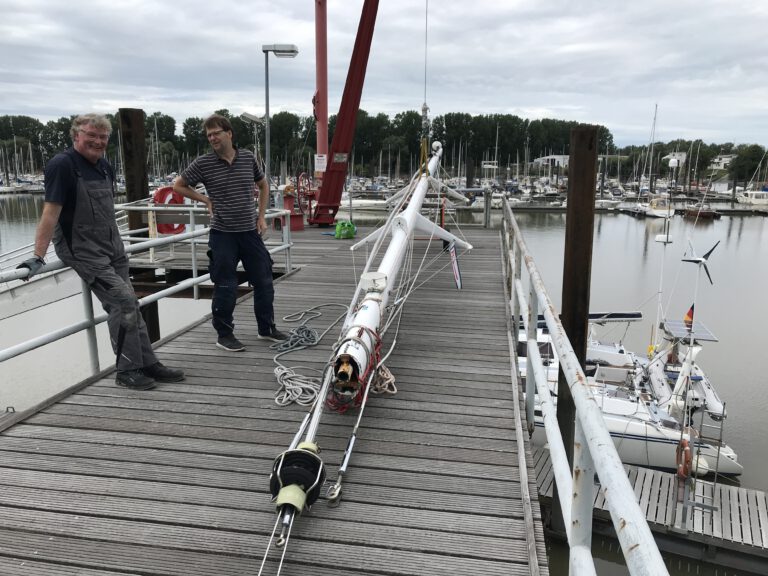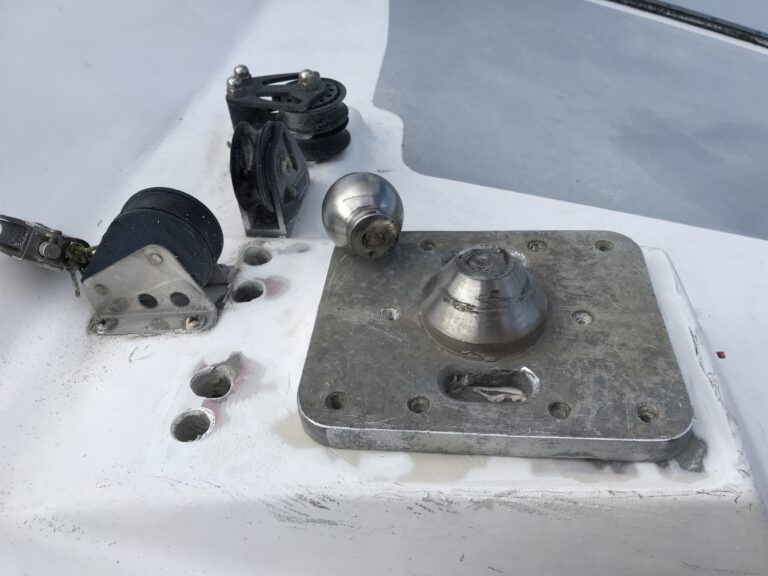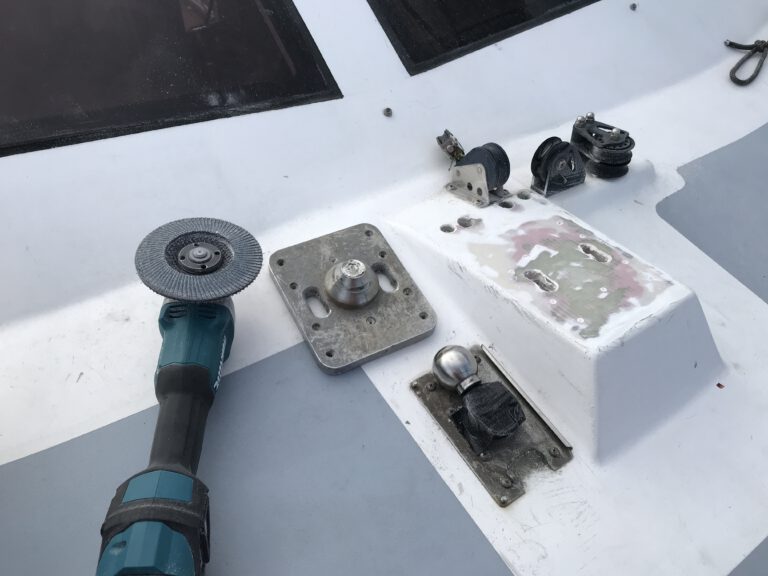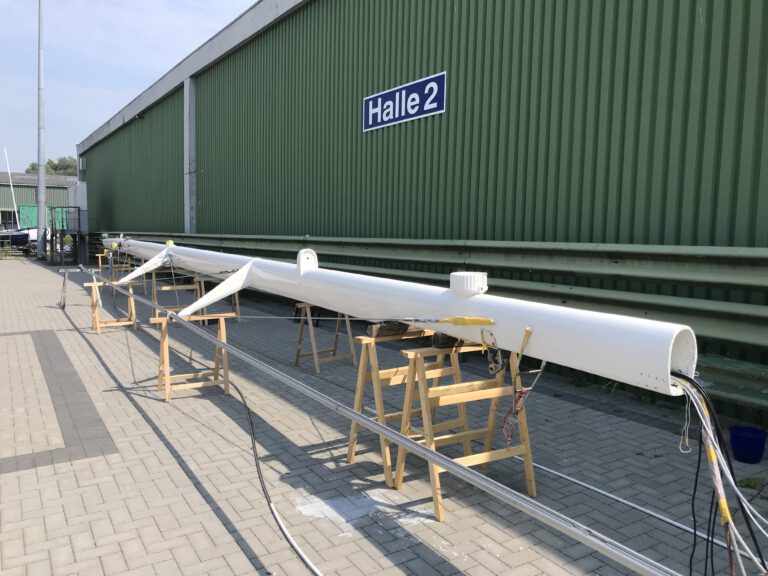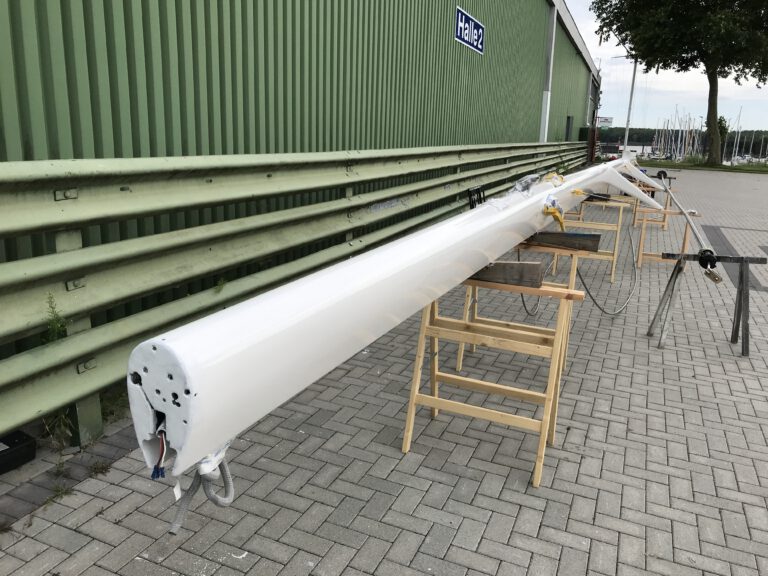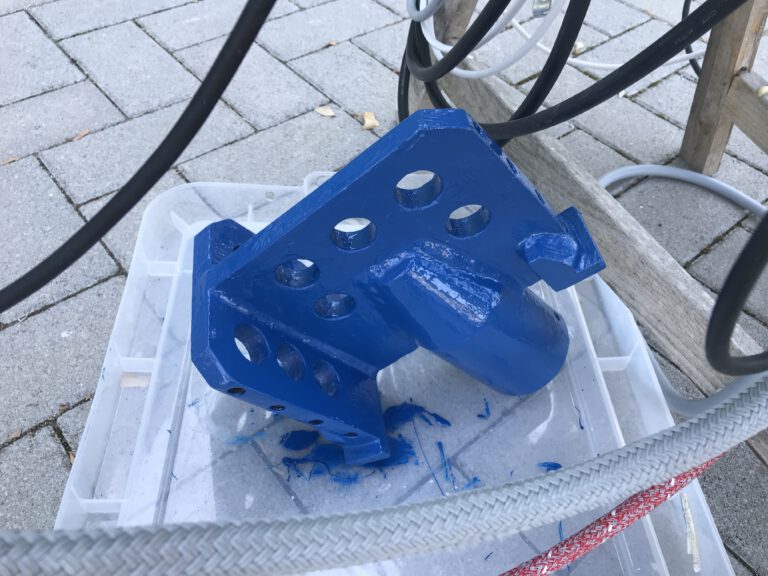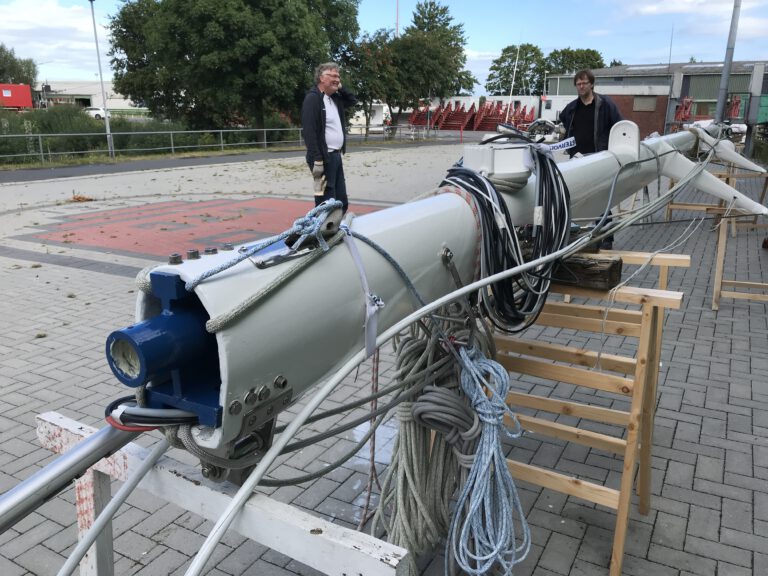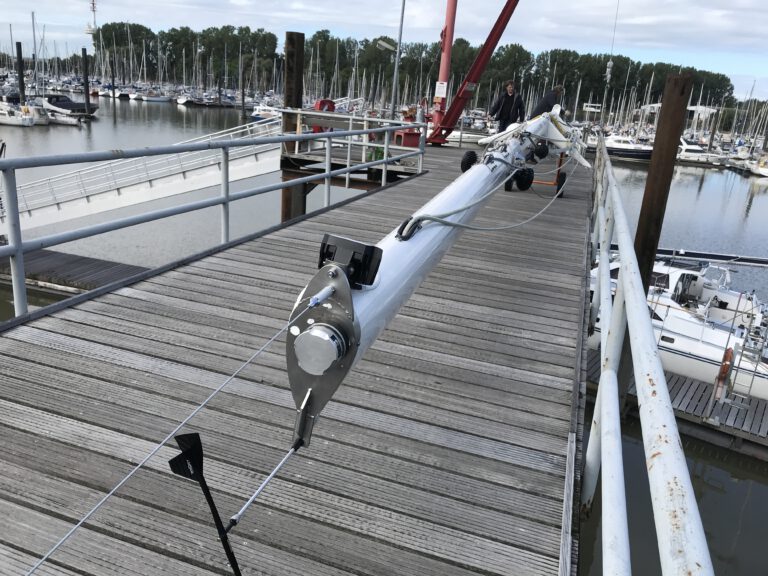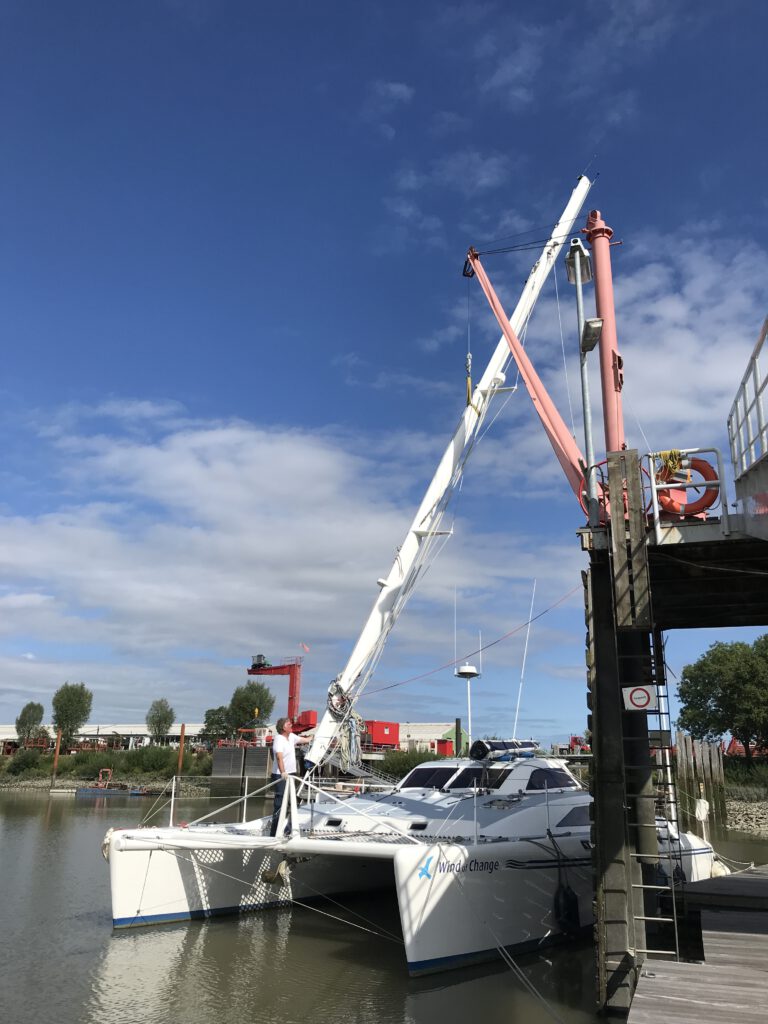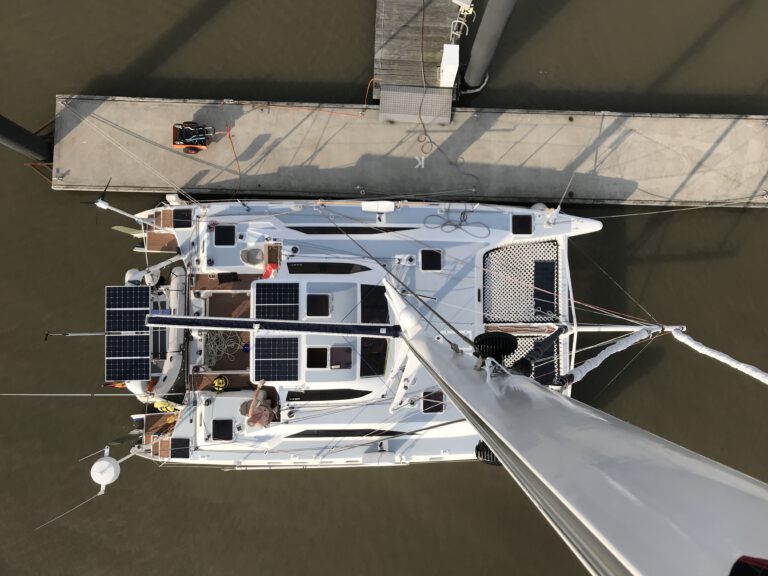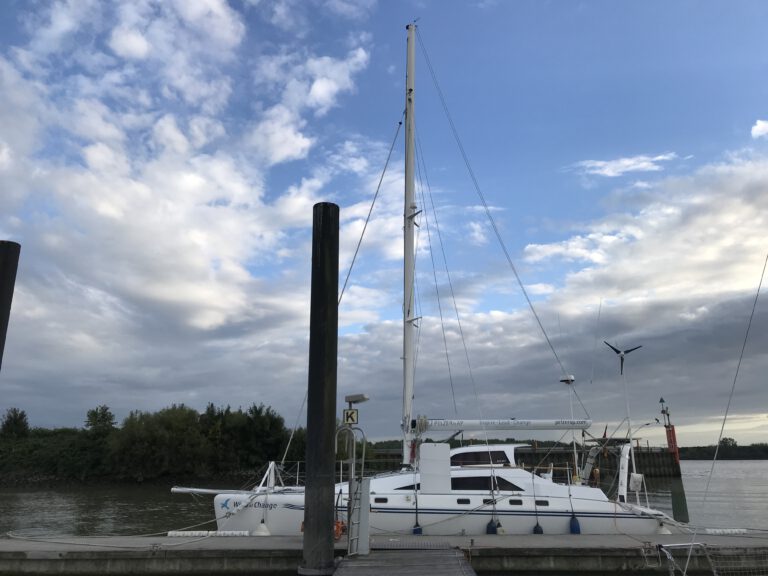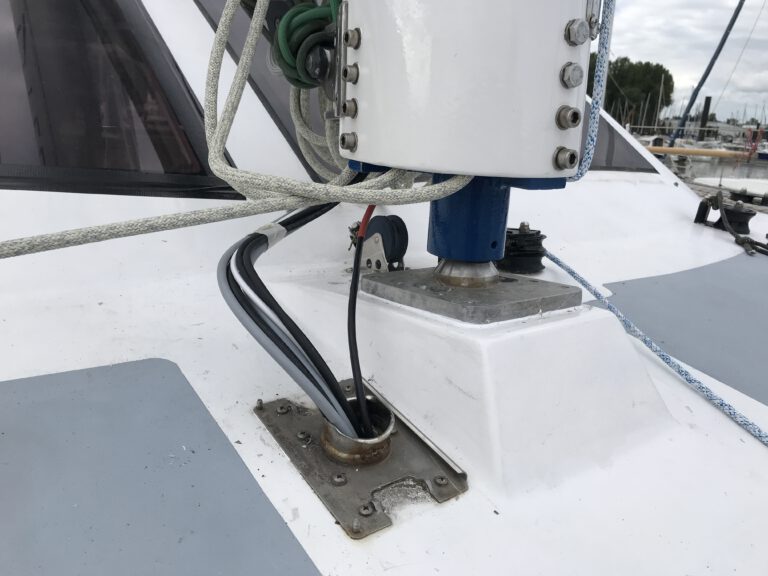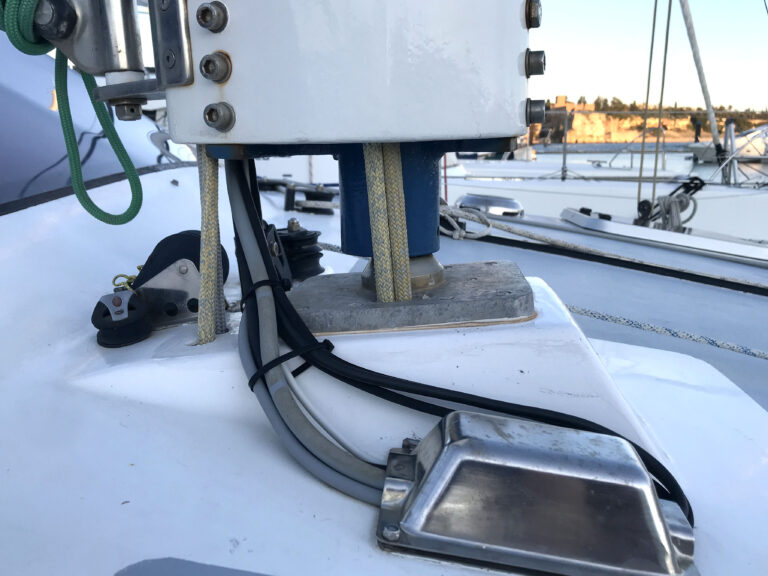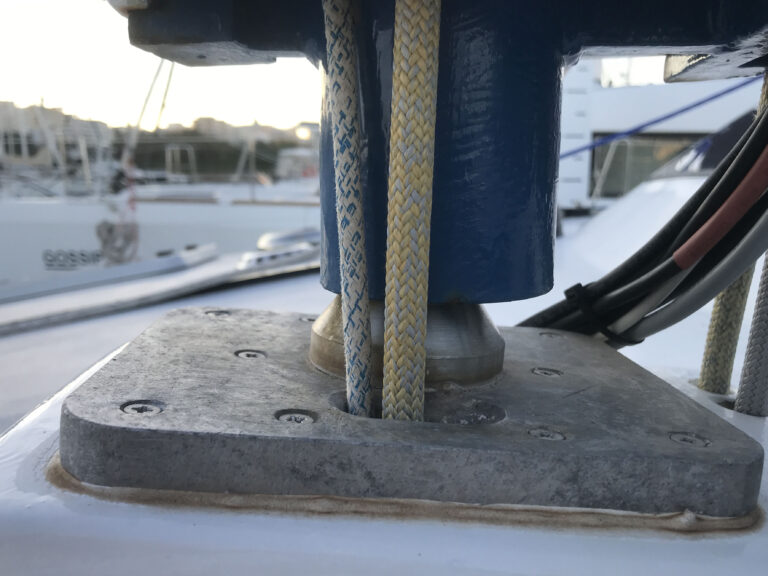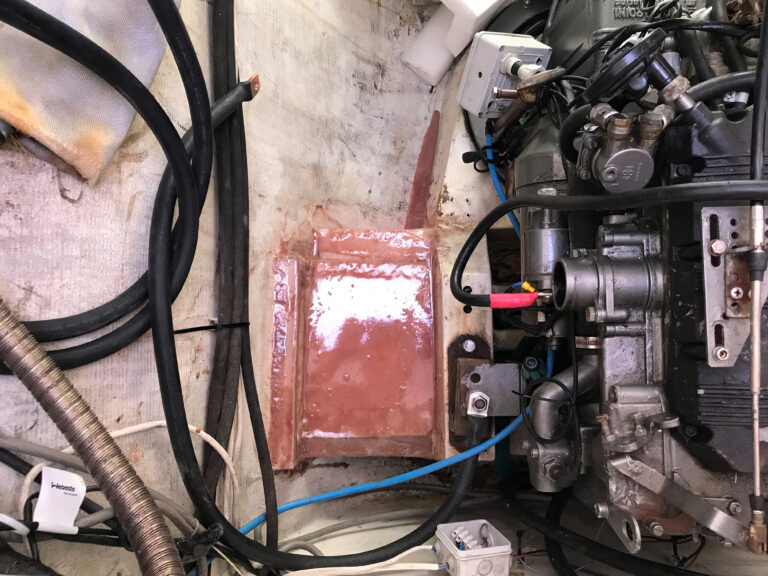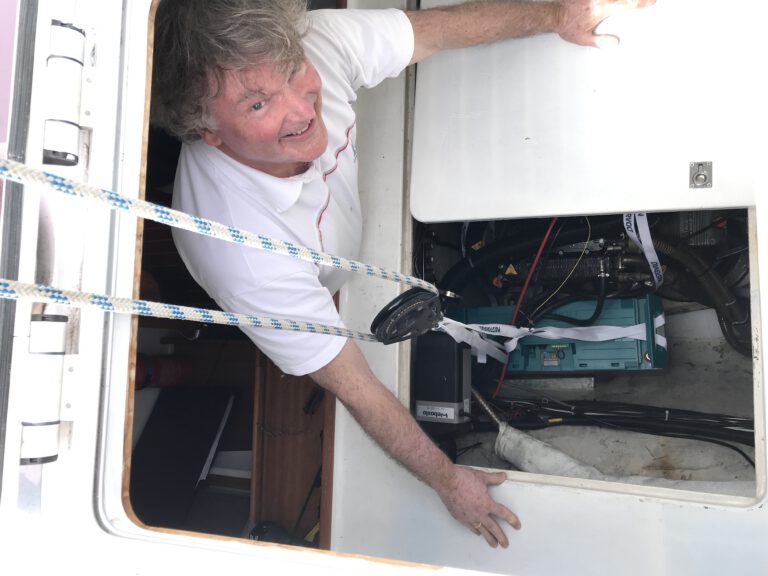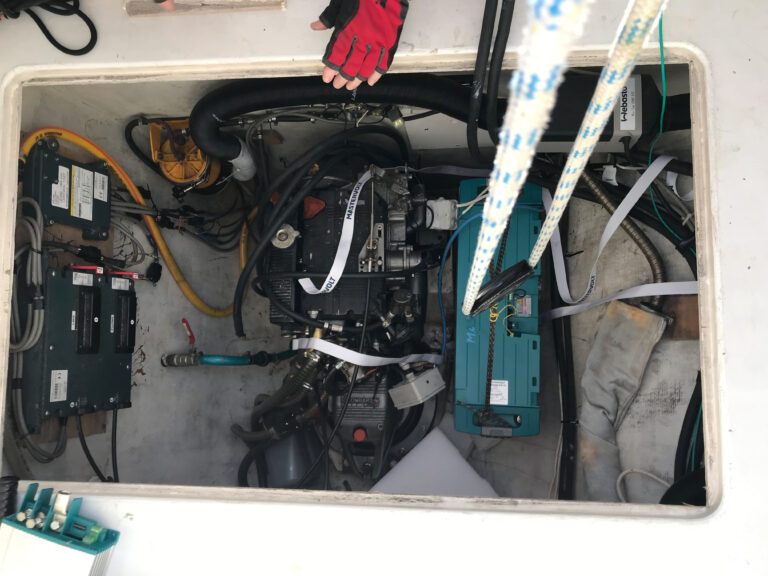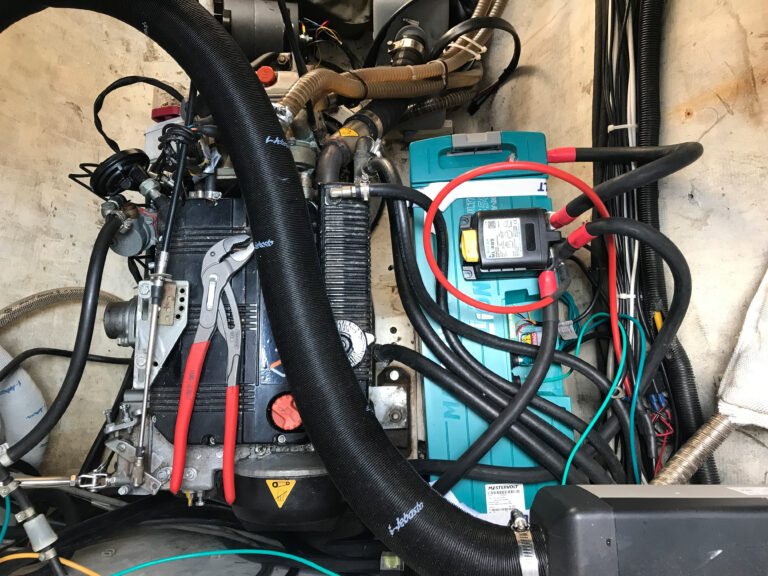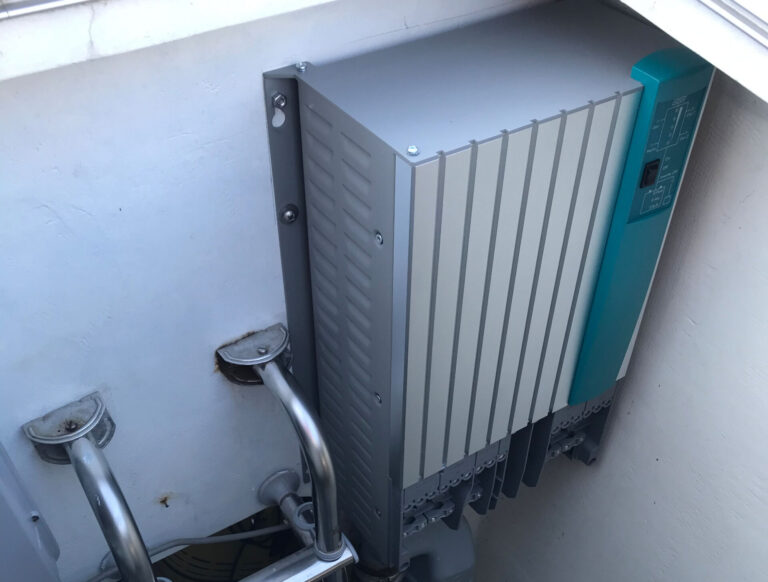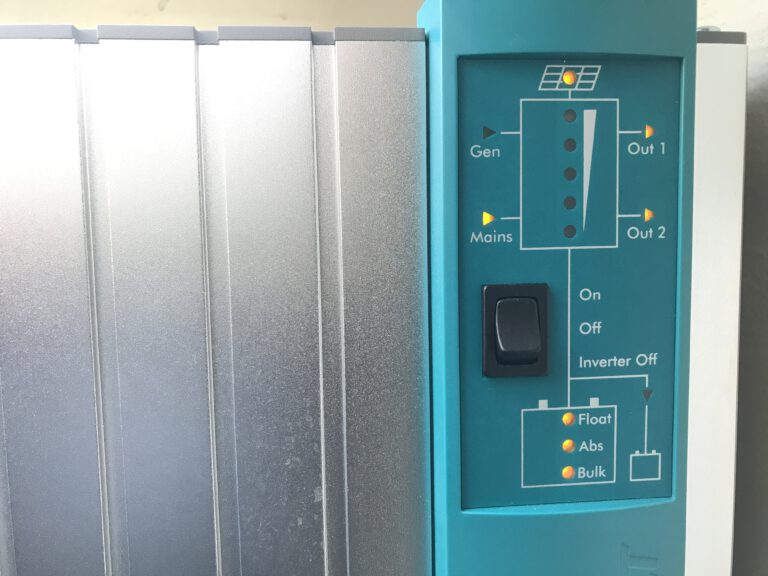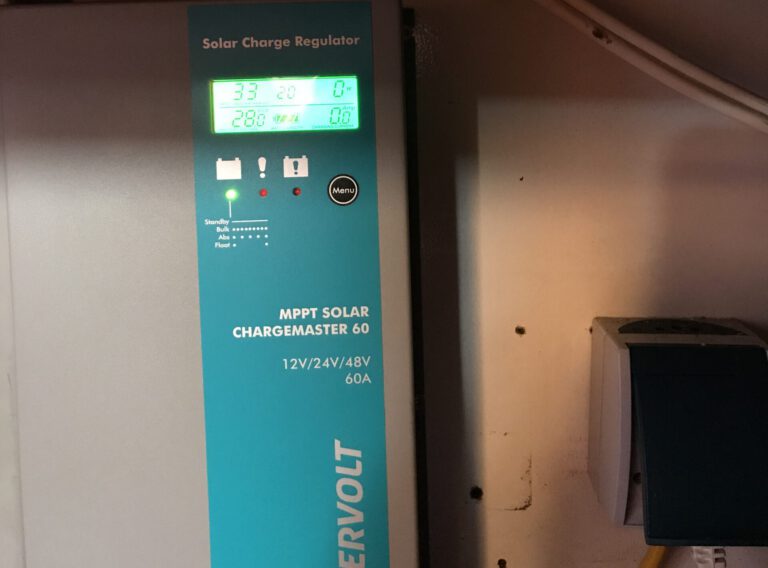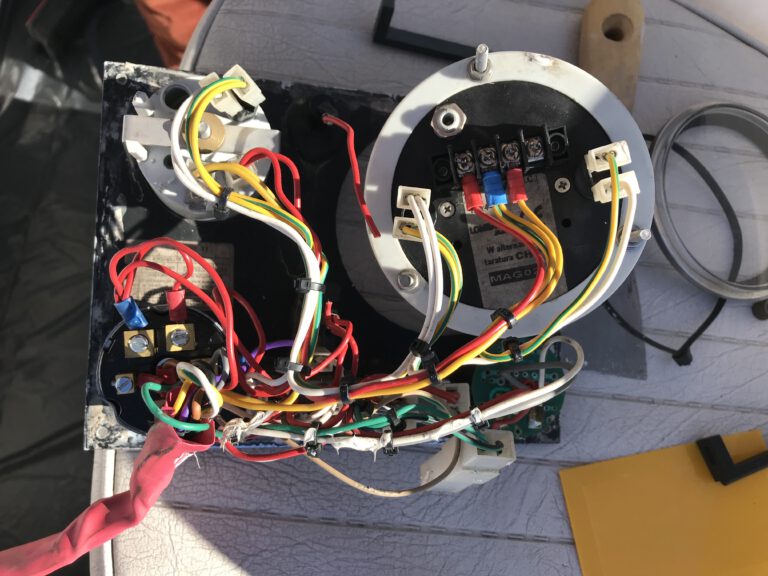Here we are talking about our year-long search for support with technical challenges in the operation of our ships…
First expert experiences
The first expert who helped me to assess a dinghy hull I had found in a garden was completely wrong in his statement “This looks like a very comfortable boat”. With his A sailing licence, he was THE sailing expert in my circle of acquaintances. This dinghy turned out to be a Taifun-type sailing canoe with a higher racing value than a 505. The test report in the yacht was titled: “Capsizing is part of the game!”
I then learned to sail on this tippy, fast bullet of a boat – Which started my love for exotics.
Engine bang on the TS Roter Sand
February 2010: The biggest damage caused by experts was caused by (from today’s point of view deliberately) incorrect commissioning of my 12l/6 cylinder marine MAN engine after water damage due to a near sinking caused by frost. At first it looked like an insurance claim and the mechanics from Hinrich Goltz Schiffsmotoren in Hamburg professionally dried out the engine by filling it with paraffin. Unfortunately, they forgot the 2 litres of water in the intake system and started the engine – there was a huge bang! The Goltz experts waved us off with a “The engine can easily handle that!” and disappeared with the short remark that all we had to do now was to change the oil.
Only – the engine was now making strange ugly noises and was smogging up the harbour; we even took the ship to the bunker station to refuel. I had a very queasy feeling about this and got a sailor to help me who had been driving as an engineer. We dismantled the cylinder head and discovered the damage: Connecting rods bent by water hammer and a destroyed piston. It was a miracle that the engine was still running at all. The responsible persons from H. Goltz Motoren, who had been called in, indignantly denied any responsibility and pointed out that they did not know what we had done wrong during the oil change and that they were therefore not liable.
The repair of the machine, including removal and installation, cost 80,000 €. Motoren Recht & Böckmann in Finkenwerder helped us very well and fairly. I installed and dismantled the engine myself with the help of my engineer and the support of the Behrens shipyard. The insurance company did not pay for the damage because they found a loophole in their conditions.
Glowing shaft is stuck!
Spring 2010: During the engine repair at Thees Behrends’ Finkenwerder shipyard, I was advised to replace the shaft sealing. No sooner said than done. The ship was finished one day before our wedding. During the sea trial, I heard a disturbing, singing noise. When I asked about it, I was reassured that everything had to settle down first. Nevertheless, I had a bad feeling and therefore cancelled the trip on the Elbe with the wedding party. After the civil ceremony on board the ship while moored at the Blankeneser Bullen, all the wedding guests simply took a taxi to the celebration at the Elbchaussee. The following evening, the two of us set off on our honeymoon in the direction of Helgoland.
However, we did not get that far. In vincinity of the Haseldorfer Marsch, the rear cabin started to burn, which was triggered by the glowing shaft tunnel! Immediately we stopped the engine, extinguished the fire and the glowing shaft was stuck for good. We sailed back towards the shipyard and rescued ourselves in the middle of the night on a sandbank behind Schweinesand. From there we were towed back to the shipyard the next morning for repeated renewal of the sealing and shaft. So we spent our honeymoon at the shipyard….
The problem was caused by an incorrectly shaped shaft: the experts at Piening-Propeller had calculated the dimensions for oil lubrication – but the Roter Sand had grease lubrication with completely different tolerances!
Excuse me, both machines new???? But good advice is not expensive…
September 2018: My next expert disaster with the engines on the Wind of Change was avoided with the help of Dutch workmen – in the middle of the night while crossing the English Channel from the Isle of Wight towards Brest, the starboard engine just stopped and I couldn’t get it going again: no turning, no starter, just strange noises and crackling in the electrics. We decided to sail across the Bay of Biscay to Portugal with only one engine (what’s a catamaran for!) and to support the tight harbour manoeuvres with the dinghy. It worked out great with a fantastic crew!
When I arrived in Portugal, I contacted all the engine experts across Europe. They all confirmed that the engine was definitely broken and that this old Lombardini engine could not be repaired. They made me great offers for two new engines, because you need two identical engines on a catamaran and you might as well throw away the other (still working) engine.
But we didn’t have 50,000 € at hand, so what could we do? I called the mechanic in Holland who had serviced the engines so far and begged him to come to the Algarve to help me with the repair. After consulting with his wife, he agreed to visit us at our expense; before that, he wanted to run an engine diagnostic for the right spare parts. Via Skype, he took me live through the analysis process of the machine and came to the conclusion that my machine was perfectly fine and only had an electrical problem. After the virtual consultation, I replaced relays, fuses and burnt cables and my engine started right away – cost 42€.
Breaking the Mast Joint
Summer 2020: We have a pivoting 18m carbon mast on our cat Wind of Change. During the survey of the vessel in the 2018 purchase process, the surveyor didn’t agree with the old standing rigging (shrouds and stays) – it was older than 15 years and therefore no longer insurable. We commissioned the Rhebergen shipyard in Amsterdam, which is one of the leading catamaran experts in the Netherlands, all steel cables of the standing rigging including connectors, toggles and shackles were replaced for €10,000 plus crane fees.
Two and a half years and around 12,000 nm later in summer 2020, we wanted to refit the mast : while craning the mast, the broken ball joint of the mast foot rolled towards us! Various experts looked at the problem and we decided to have the foot welded stronger and better. The renovated mast was put up again and everything seemed perfect.
October 2021: After many beautiful cruises one year and 20,000 nm later, we noticed the mast joint broke again. For 15 years the foot of the mast had been fine and in the last two years it had broken twice in the same place. So there had to be something else behind it! When we measured the mast more closely, we realised that our mast was much too vertical on a foundation that was inclined backwards. The mast had no mast rake as is usually the case with catamarans, which have a rotating mast, no backstays and only 2 shrouds. During the subsequent measurement with a professional rigger we found out that our new forestay was installed about 30cm too short and that the mast is therefore not at right angles to the mast foundation. This creates shear forces in pitching waves, which destroy the bearing of the mast.
We have not yet found a solution for a repair that involves less than:
Laying the mast, re-laying the electrics, renewing the forestay and shrouds, repairing the mast base and foundation.
Estimated damage 30.000€, for which we have to pay once again.
Electrics – an eternal mystery
On my first F24 trimaran Windfee, I designed and installed the electrics myself, which gave me an overview. On all subsequent ships, I had to rely on help due to the complexity of the systems.
The electrical installations on the Roter Sand were more complex than any apartment building, with 8 different wiring and radio systems:
- AC:120V;/ 240V/ 380V;
- Direct current 12V for the normal mains /
- DC 24V for radar and lighting
- Direct current 48V for the bow thruster and the buffer battery
- W-Lan via 3G UMTS
- RJ 45 network for the on-board computers
- Sea Talk NG network for Raymarine devices (radar, autopilot, compass, sonar, wind)
After the purchase, I asked the electrician responsible for the construction of the Roter Sand, a Mr. Bensch, to prepare the ship again and to install and connect further functionalities.
This included: generator, battery banks, self-steering system and the renewal of the navigation lights. He didn’t and couldn’t finish; it culminated in everything working – as long as they didn’t cut the 230V shore connection. We then went on the transfer trip with a self-made “emergency wiring”. And whenever a loose contact flickered somewhere again or a cable sizzled, this was called the Bensch factor. Although there was a whole A4 folder full of wiring diagrams for the 28 m Ketsch, unfortunately only a half of them were correct and no one knew exactly which one.
Our current ship also has many electrical challenges, which we have mastered so far even without plans and without experts. Most recently, the running Lombardini motors consumed 30A /12V. Instead of producing electricity, they were sucking the batteries dry. It took several weeks and two destroyed batteries before we found out that our ignition locks were rotten and the ignition plugs fired permanently. On the way to solving this problem we wasted a lot of money and nerves with the help of various expensive “experts” including:
- A useless B-to-B charger that does not work with two machines on one cat.
- Mastervolt Alpha II charging management incorrectly connected, so the battery is not charging
- Too small cable cross-sections installed (result: poor battery charging and melted cables)
- 8 AGM batteries worn out in 2 years due to incorrectly adjusted charging management
We now rely on an expert to help us do it ourselves with a remote maintenance system: By providing advice, online maintenance of the software systems and planning of the projects. After detailed advice and reliable, speedy support with procurement and installation from Rene Dommenget of dd-handel, we have now perfected our electric autonomy with solar and wind power. We run a balanced charging system for 12 V / 24 V with enough capacity to produce 250l of water every three days. As a reserve, we have two 150 A / 24 V generators (equivalent to 3 kW in 240 V AC) that can be powered separately with the Lombardini machines.
